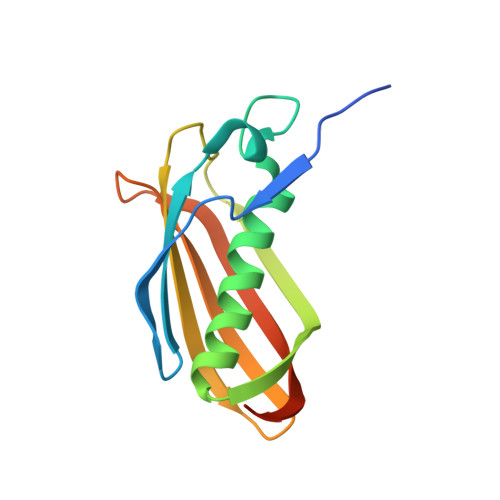Structural and Functional Characterization of the PaaI Thioesterase from Streptococcus pneumoniae Reveals a Dual Specificity for Phenylacetyl-CoA and Medium-chain Fatty Acyl-CoAs and a Novel CoA-induced Fit Mechanism.
Khandokar, Y.B., Srivastava, P., Sarker, S., Swarbrick, C.M., Aragao, D., Cowieson, N., Forwood, J.K.(2016) J Biol Chem 291: 1866-1876
- PubMed: 26538563
- DOI: https://doi.org/10.1074/jbc.M115.677484
- Primary Citation of Related Structures:
4ZRB - PubMed Abstract:
PaaI thioesterases are members of the TE13 thioesterase family that catalyze the hydrolysis of thioester bonds between coenzyme A and phenylacetyl-CoA. In this study we characterize the PaaI thioesterase from Streptococcus pneumoniae (SpPaaI), including structural analysis based on crystal diffraction data to 1.8-Å resolution, to reveal two double hotdog domains arranged in a back to back configuration. Consistent with the crystallography data, both size exclusion chromatography and small angle x-ray scattering data support a tetrameric arrangement of thioesterase domains in solution. Assessment of SpPaaI activity against a range of acyl-CoA substrates showed activity for both phenylacetyl-CoA and medium-chain fatty-acyl CoA substrates. Mutagenesis of putative active site residues reveals Asn(37), Asp(52), and Thr(68) are important for catalysis, and size exclusion chromatography analysis and x-ray crystallography confirm that these mutants retain the same tertiary and quaternary structures, establishing that the reduced activity is not a result of structural perturbations. Interestingly, the structure of SpPaaI in the presence of CoA provides a structural basis for the observed substrate specificity, accommodating a 10-carbon fatty acid chain, and a large conformational change of up to 38 Å in the N terminus, and a loop region involving Tyr(38)-Tyr(39). This is the first time PaaI thioesterases have displayed a dual specificity for medium-chain acyl-CoAs substrates and phenylacetyl-CoA substrates, and we provide a structural basis for this specificity, highlighting a novel induced fit mechanism that is likely to be conserved within members of this enzyme family.
Organizational Affiliation:
From the School of Biomedical Sciences.















